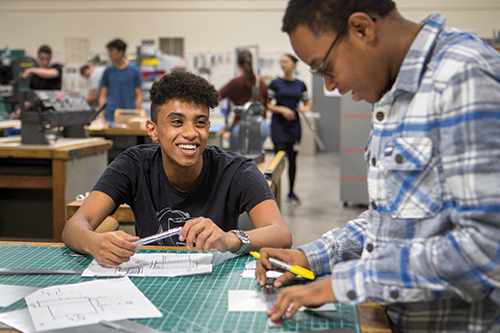When asked about the recent success of a student-led aerospace project called EQUiSat, Brown planetary scientist James Head ’69 PhD said he isn’t surprised—he’s impressed: “Brown undergrads have done the impossible: They have designed, built, and launched a satellite with the audacious goal of bringing space to the people. What could be more ‘Brown’ than students dreaming an impossible dream and then making it a reality?”
Whether for the summer, the semester, or the academic year, collaborating one-on-one with a professor or with an interdisciplinary team, writing a thesis, or working on an independent study project, at any given point more than 1,000 Brown undergraduate students are conducting research in labs, libraries, and the field.
If Brown is a hotbed of research opportunities for undergrads, said Oludurotimi Adetunji, dean of undergraduate research and inclusive science, it’s because “students are seen as equal partners and co-creators. Their voices and contributions matter.”
Their work is not going unnoticed. In fall 2017, two recent graduates were among the 25 cited as having written the top undergraduate research papers by the prestigious Undergraduate Awards—the largest academic awards program in the world, with 6,432 applicants from across the globe that year. Seventeen additional papers by students and recent alumni were “highly commended.”
And in November 2018, Rhea Stark ’18.5 was awarded a Rhodes Scholarship, one of only 32 in the country. She was a dual concentrator in archaeology and the ancient world and Middle East studies, and the Rhodes Trust said about her work as a researcher that she “uncovers buried histories by elevating the narratives of everyday people, particularly women and people of color.”
For Dean of the College Rashid Zia ’01, student research is important because “these opportunities help to actively engage students in one of our core missions—discovering and sharing knowledge. Research not only helps students better understand the specific topic of their projects, but also reinforces the power of inquiry. They can appreciate the dynamic nature of knowledge and see how their own effort can advance understanding.”








